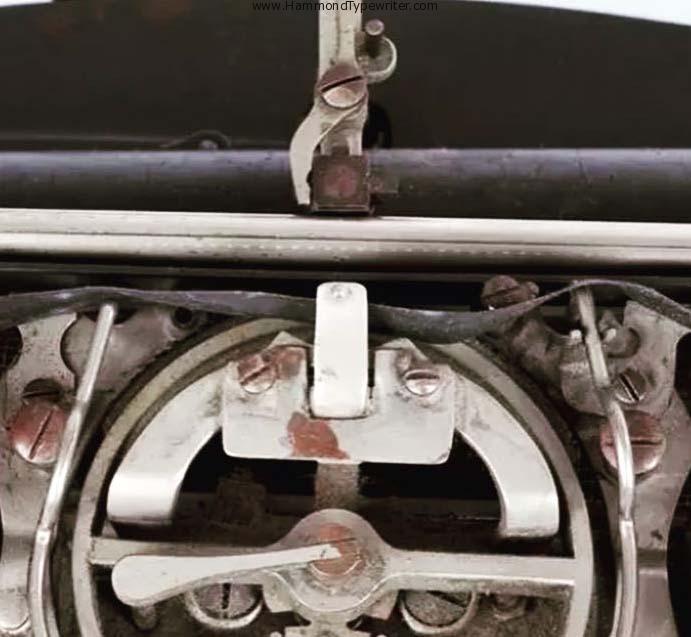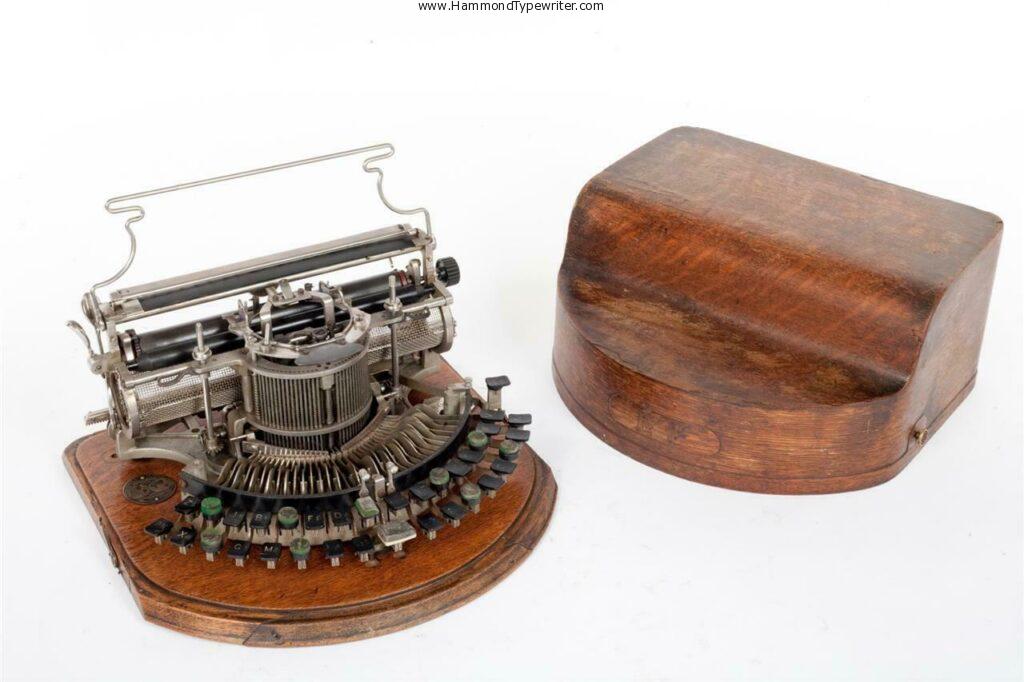
I recently acquired a Braille Hammond in which I hoped to solve a mystery. Hammond produced a braille shuttle, ostensibly to print raised dots, but were those dots raised on the front of the paper, or the back when typed in the machine?

My theory is that it prints those dots on the back of the paper and it comes from this photograph:

A close up of the hammer face

At the top of the close up photo is a small black box. On the right side of this box is a protruding peg, which would be used for normal printing of shuttle text. However the face of the hammer, which is pointing at the shuttle loaded (not a Braille shuttle apparently) appears to have an indentation in its face.
Hammond developed a reverse-carriage machine quite early, possibly as early as the Anvil and Shuttle. In these early machines, a clutch located on the mainspring axel would be engaged, thereby allowing the machine to type right-to-left. In addition to allowing the operator to type in languages such as Arabic, I believe it created the potential for braille.

On the braille machine that contains the indented-hammer face, there does not appear to be such a mechanism, which was later moved to the rear of the machine in Multiplexes.
The theory is that if the hammer’s face is open, then it might explain how the braille shuttle worked. When a key is pressed the hammer will come forward, pressing the paper into ostensibly a ribbon, and then the shuttle. What if the ribbon and impression strip were not there? Might the paper be then pressed with force against the shuttle?
If so, then it’s possible the braille shuttle protruding points would indent the paper, creating a raised bump on the reverse side. But how to make it so a person can read it? By typing in reverse.
If the Hammond was engaged to type right-to-left, then the operator would first push the carriage all the way to the left. Engage the revese mechanism. Then as they typed, the carriage would move to the right. If this were printed with ribbon on the face of the page, it would say o-l-l-e-H. If you flipped the paper over and held it up to the light, you would see H-E-L-L-O written through the paper.
Braille might work in the same way. By typing Hello backwards, ⠕⠇⠇⠑⠓ , creating the dumps on the reverse side of the paper, when the paper is removed and turned over, the braille now reads ⠓⠑⠇⠇⠕ or Hello left-to-right.



Alas, the machine I received has a smooth surface hammer face, which doesn’t disprove the theory but it raises more questions. Perhaps this machine was regular Hammond that has been adapted for the blind to type using regular shuttles.
The search continues….
